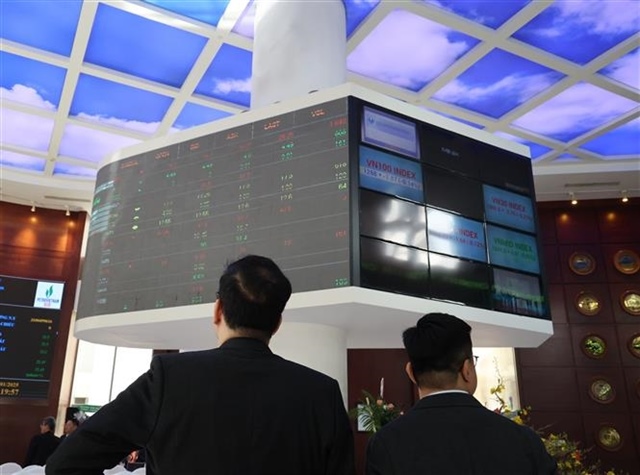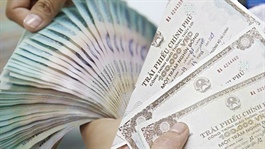Real estate market heads corporate bond issuance as enterprises lean on loans
Real estate market heads corporate bond issuance as enterprises lean on loans
The bond market continues to be seen as a positive capital mobilisation channel for businesses and the economy, with some industries faring better than others in this regard.
“Real estate and construction have been the groups with the largest issuance proportion on the stock market in the first two months of this year,” said Le Hong Tam, deputy director of PSI’s Consulting Division.
Tam cited FiinPro data, according to which corporate bonds of about $1.13 billion were issued in that period, doubling the volume of the same period last year.
Data from the Vietnam Bond Market Association showed that in 2021, up to 243 enterprises issued bonds for the first time last year, accounting for 40 per cent of the total issuance volume, most of which came from the real estate and construction sectors.
Dr. Le Xuan Nghia, member of the National Financial and Monetary Policy Advisory Council commented, “In recent years, the bond issuance structure has changed, focusing more on groups with speculative opportunities, with nearly half of the bonds issued in real estate, about 30 per cent in the banking sector, and the remainder falling onto manufacturing.”
“In the bond market, the interest rate can go up to 12-14 per cent per year, making it difficult for the manufacturing industry to compete with real estate, construction, and banking,” Nghia said.
In addition he also noted, “Bond terms are shorter than many production cycles, which is another reason that many enterprises can’t come up with a repayment plan.”
Most corporate bonds are being issued with relatively short maturities of only about three years, with very few of them having maturities of five or more years.
Dang Duc Thanh, chairman of financial investment group Green+ said, “Raising capital for production and business is one of the most important and vital issues for businesses. During the pandemic, the credit market was overburdened because of the demand for both short- and long-term capital supply for the economy and businesses.”
Vietnamese enterprises would depend too much on bank loans, according to Thanh. “The fact that businesses borrow with high interest rates is a great risk because the costs for that often lead to low profitability. Moreover, being too dependent on bank loans will also affect their operations if the loan source is limited or interrupted,” he explained.
Last December, Viet Star Real Estate Investment Co., Ltd., a member of Tan Hoang Minh Group, won the bid for land plots with an area of over 10 square kilometres in Ho Chi Minh City’s Thu Thiem area for around $1.06 billion – “Too high compared to the actual land price in Thu Thiem today,” said Le Hoang Chau, chairman of the Ho Chi Minh City Real Estate Association.
“The regulations on property auctions do not strictly regulate financial capacity conditions that investors must fulfil. It is stipulated that a deposit must be paid, with a maximum amount of 20 per cent of the starting price of the auctioned asset, but the investor is not required to have a written guarantee for payment from a credit institution in the event that the auction house is not eligible for payment,” Chau said.
“In the end, the investor pays the property price several times higher than the starting price of the auctioned asset,” he added.
Also according to the existing regulations, investors who win an auction but do not sign or perform the sales contract (that is purchase the auctioned property) will lose their deposit, which is worth anything from 5 to 20 per cent of the auction’s starting price.
“This level of sanctions is not enough of a deterrent to businesses, especially in public land auctions and real estate projects,” Chau said.
Data from the Ministry of Natural Resources and Environment showed that auctions of land use rights currently account for about 90 per cent of public property auctions.
VNDirect’s forecasts for 2022 all lead to a slight increase in deposit interest rates. It believed that individual investors will continue to turn to other investment channels with higher yields, typically securities.























